From the August 2008 issue
Much of our older content has been stored on the back shelves of our offices... we always have fun looking back at days gone by and we hope you enjoy these little gems as well!
Put away your fringed chaps, beanie helmet, fingerless gloves and leather vest because you don't have to be a member of that club to ride this Harley-Davidson. This bike is a rider's bike, all about go and less about show. It was built to be ridden, not parked amongst the posers on a hot patch of blacktop, kickstand slowly piercing the tar.
Meet the XR1200, The Motor Company’s sportiest Sportster ever. First unveiled at the 2006 Intermot show in Germany, the bike has just gone into production in Milwaukee…“Er, excuse me, did I miss something?” you ask. “How come I haven’t heard anything about this bike?”
Well, that’s easy. If you live in North America, this bike wasn’t made for you! Yes, we’re sorry to inform you that at least for the time being the XR is, in an unprecedented move, a European-only release from the clan on Juneau Ave. Never mind that it looks like it got lost on the way to the San Jose Mile.
We can already hear the keys clacking as droves of Americans put fingers to keyboard expressing their dismay at Harley for snubbing its nose at them. Well, sorry, bub, the fact of the matter is that a lot of consumers on this side of The Pond talk the talk, asking for standard-style roadsters, but then fail to materialize at dealerships with cash in hand when said model goes on sale. Just ask the Japanese. They’ve made several attempts at bringing in standards or nakeds that are top sellers in Europe only to have them become dust collectors on showroom floors stateside.
On the flipside, the Euros have been begging H-D to build something like the XR for years. One of the most popular-selling models over there has been the XL883R Sportster 883 Roadster, partly because of cost but also for its decent handling. The new XR is a lot more sporting while retaining its black-and-orange heritage by embracing the XR750 dirt-tracker’s image. Europeans weren’t afraid to put their money where their mouths were, either. As soon as production of the 4000 to 6000 XRs planned for this year was confirmed, dealers were bombarded with more than 600 preorders.
Europe has been a hard nut to crack for Harley and yet it sold some 40,000 motorcycles there in 2007, part of a 58 percent sales blip over the last three years as the once-mighty dollar swirls down the drain overseas. Still, the market is very different. A larger percentage of riders use their bikes for transportation during the week and then take them on twisty mountain jaunts when the weekend rolls around. With Euro sales quickly growing, it was the perfect time to build a bike catering specifically to that rider.
So, think of the XR1200 as an American tourist in Europe, just not the kind wearing dark socks with sandals, Bermuda shorts and bright Hawaiian shirt. This visitor is a little more refined, polished and blends right in with the old continent’s vibe.
What differentiates a Harley-Davidson developed for Europe from models typically built for us? First and foremost, it can go around corners; we mean really go around corners! This bike is the product of extensive testing at Harley's secret 530-acre Florida Evaluation Center near the Everglades. It consists of a 1.2-mile handling course, 2-mile-long high-speed straight and more bumps, potholes and bad pavement than a Sicilian autostrada.
Result is a motorcycle with a stiff chassis, inverted 43mm Showa cartridge fork, twin Nissin four-piston front brakes with large 292mm discs, lightweight cast-alloy wheels shod with very sporty Dunlop Qualifier rubber, and geometry optimized for getting through apexes quickly while remaining super stable. Stuff a highly refined and performance-oriented 1202cc Evolution engine that’s been caught shoplifting over at Erik Buell’s parts bin, and you begin to get the whole picture.
Cycle World had exclusive access to the Florida test facility, not only getting a glimpse behind doors that no other journalist's eyes had peered through before, but also riding the XR on the very handling course where it was developed. After being given the same press materials and presentation that Euro-journos had received just weeks earlier, we took an extensive tour of the compound. The place was rather quiet; future models had been hidden to keep the nosy scribe and the photographer's lens from seeing into Harley-D's future.
Shortly thereafter, we headed out onto the road course behind lead vehicle dynamics engineer and club roadracer (GSX-R750!) Matt Weber for hot laps. It only took a few to realize that the XR1200 is without a doubt the best-handling production Harley to date. A few cautious laps were spent making sure the bike didn’t jump off the rails or do anything funny, but it quickly became apparent that the XR was quite comfortable with its home-field advantage.
Harley’s handling course features a couple of fast fourth-gear sweepers connected by tighter third-gear bends; the truth is that the firm but smooth-shifting tranny could be left in fourth for the entire lap and not really affect acceleration due to a nice plateau of torque.
On track the XR impressed with its predictable, stable handling and surprisingly quick steering. On paper, the numbers don’t do the 1200 justice. Turn-in is linear and predictable all the way to metal-dragging full-lean. Key to this according to Weber was to fine-tune the front end to make the bike feel smaller than it really is, to make it low-effort so that any level of rider is comfortable. A lot of different geometry options were tried. Different rake angles, triple-clamp offsets and tires were experimented with. Weber’s team settled on 29.3 degrees of rake and 5.1 inches of trail. At parking lot speeds, tight, feet-up U-turns are a snap.
Engineers chose a 120/70ZR18 Dunlop Qualifier front tire. The reason that an 18-incher was selected was that it provided the best compromise between grip, turn-in and retaining the look of a big-wheel flat-tracker. Numerous laps around the test track completely torched the 180/55ZR17 rear tire, largely due to the abrasive nature of the surface and also because the XR carries about 60 percent of its 568 pounds (dry weight) aft of center.
Hard braking wasn't really required on track, but a street ride through the Everglades later in the day proved that the Nissin setup not only provides excellent feel but impressive power. Best Harley brakes ever? There's a real strong argument in favor of that assumption, as CW's resident Sportster expert Allan Girdler stated after riding our XR1200 testbike back in California: "Brakes work, reliable to a fault, completely debugged…I mean it's been 50 years, eh?"
Another area that Weber’s team concentrated on was suspension compliance. They wanted as much travel as possible (4.9 inches front, 3.5 rear) to allow a firm but smooth ride. On the handling course, the non-adjustable fork provided good damping and never let the bike wallow or seesaw back-and-forth transitioning between braking and throttle. The same can be said for the twin preload-adjustable shocks attached to a beefy cast-aluminum swingarm, providing a firm ride at a sporting pace. On the street, the fork delivered a nice ride while the limited rear travel would occasionally transfer a jolt to the rider over rough pavement–but it’s still miles better than the usual Sportster behavior.
But does the motor–its architecture laid down in the 1950s–live up to the XR’s handling prowess?
After taking delivery of our test unit in Newport Beach, Road Test Editor Don Canet put it through our usual battery of performance tests. The biggest surprise was that the XR1200 engine makes a whopping 18 more horsepower (79.2 hp) than the XL1200R Sportster we tested earlier in the year. Torque output is similar at 70 foot-pounds, but where did they find all that performance?
No single item stands out as a major contributor to the newfound juice; instead it’s a long list of details that make this Evo sing a different–if slightly noisy–mechanical tune. A higher 10.0:1 compression ratio, combined with performance cams (Buell XB items), performance exhaust and a new EFI throttle body have created more power–and necessitated better top-end cooling. Cylinder heads are now plumbed with external oil lines that pass through a five-row cooler to keep temps down. Visually, the heads are a throwback to those of the ironhead Sportsters, which had exterior feeds pumping oil to the rockerboxes on the original ’57 XL right through the first Evo in ’86.
According to Powertrain Leader Dan Grein, the single most difficult aspect of designing the XR1200’s engine was fitting the 50mm downdraft throttle body into the Vee between the cylinders and then creating enough airbox volume inside the confines–dictated by styling–of the fuel tank.
The single-butterfly, sequential-port fuel-injection system features an ECU-controlled flapper in the airbox to enhance intake efficiency. Exhaust is handled by a stainless-steel, 2-1-2 system with 6.8 liters of volume for improved breathing and top-end performance. A catalyzer is fitted in the junction between the headers and mufflers; and with help from info sent to the ECU via twin oxygen sensors, the 1200 meets Euro 3 emissions requirements.
Not only do all of these modifications allow the XR to crush the performance figures of the XL1200 with a second-quicker 0-60 time (4 seconds flat) and quarter-mile sprint (12.42 seconds at 106.41 mph), but the engine is incredibly refined.
“The 1200’s fat middle-rpm torque curve, considerable engine braking, easy flickability, generous cornering clearance and stable chassis combined to let me develop an easy but surprisingly fast flow through SoCal’s Ortega Highway’s best twisty sections,” Senior Editor Paul Dean commented. “I was able to carve through the corners in nice, graceful arcs with only the occasional need to shift or feather the brakes. So instead of my backroad run feeling like a Superpole qualifying lap, it was just pure fun, plain and simple.”
Fuel-injection response is dead-smooth both on the street and track and never comes close to unsettling the chassis, even when picking up the throttle from a closed position in a tight bend. Fifth-gear roll-on performance feels very strong, meaning a downshift for passing is rarely required. The rubber-mounted motor hums along smoothly at 3800 rpm in top gear at an indicated 70 mph, with very little vibration felt through the pegs or bars. It’s only at idle that the 45-degree Twin exhibits its ants-in-the-pants dance routine as the motor moves about on its links and rubber biscuits. On the freeway, the mirrors have moments of clarity, but don’t expect a clear view at every rpm.
Almost everyone who rode the XR complimented the bike’s ergos. The seating position is upright and neutral with a relaxed reach to the blacked-out dirt-track-bend bars. Smaller-diameter grips than on its cruiser cousins are welcome for improved feedback and a feeling of control when riding hard. Although neither brake nor clutch levers are adjustable, they have a nice shape that should fit a variety of hand sizes. Clutch effort is firm without feeling heavy, allowing clean getaways from stops. Footpeg placement is sporty without being sportbike-like and is positioned to give the XR a 39-degree angle of lean. The 31.4-inch-high seat is comfortable and offers wiggle room for moving around on long rides or to accommodate riders of different heights. The instrument cluster doesn’t exactly offer a plethora of info but it tells you all you really need to know and, as a bonus, offers a decent amount of wind protection with no noticeable buffeting.
Styling manager Frank Savage cites the raw, simple XR750 racebike as the primary inspiration for the 1200. The slogan “Inspired by the racing line” graces all of the XR’s press materials. When it comes to racing, dirt-track is obviously where Harley-Davidson has had its greatest success. Since 1970, XR750 dirt-trackers have dominated the Grand National Championship series with 26 titles and thousands of wins in the hands of riders like nine-time champ Scott Parker, who was instrumental in testing and development of the XR1200.
The 1200’s proportions and features, such as the slender fuel tank and rear fender, were mandatory to keep XR similarities intact. A small stylish headlight sits between the bold aluminum triple-clamps, giving the bike a purposeful look; twin upswept exhausts mimic the racer’s; and details like the word “Sportster” cast into the right engine case pay homage to the ’57 model, which had the same logo on its primary cover.
So how is it that a bike packed with so much heritage, style and influence from the most American form of motorcycle racing isn’t available in the U.S.?
Put simply, European H-D dealers demanded this bike. Dealers in the States will have to prove to The Motor Company that they want the XR1200 and can sell it. For the first time in Harley’s history, American customers are going to have to wait and see if what is rightfully theirs will be available in the near future. In our opinion, it’s not a matter of if but when. This motorcycle is simply too good to be left out of Harley-Davidson’s largest market.
BLAKE CONNER, Associate Editor I've been on a lot of Harley-Davidson press launches over the years, but our exclusive test in Florida marked the first time I honestly didn't know what gear to pack. Okay, that sounds kind of…well, like I'm light in the loafers or something my wife would say.
Anyway, the solution to my problem was just a few mouse clicks away. I logged onto H-D U.K.’s website and watched video of stunt rider Craig Jones doing 12 o’clock wheelies on the XR1200, and another of nine-time Grand National champ Scott Parker ripping around Harley’s test track. So, I packed up my two-piece leathers with knee sliders, dilemma solved! The XR looked like the real deal.
It may not be super fast or carve like a scalpel but it’s a very enjoyable bike with capabilities way beyond anything else in orange and black. Riding the XR1200, I don’t feel like a geriatric weekend warrior searching for the fountain of youth; I just feel like a motorcyclist enjoying a really good bike.
PAUL DEAN, Senior Editor It is utterly inconceivable to me that Harley-Davidson would hesitate, even for a nanosecond, to sell the XR1200 in the U.S. I understand that it's a concept developed in and for Europe (which prompts a whole lot of other questions), but the entire genesis and spirit of the bike is purely American–the company, the Sportster, the XR750, flat-track racing in the heartland. I don't get it.
But I do get the XR1200. It isn't just the best Sportster ever, it's perhaps the best Harley ever. It has the best chassis, suspension, brakes, cornering clearance, backroad handling and overall performance of any street-going H-D, with wonderful styling cues from the XR750 racebike and the original XLs of the late Fifties.
Whether just bopping along the freeways or bombing down twisty backroads, I had more fun on the XR than I ever imagined a Sportster could allow. Thumbs-up to H-D for building it; thumbs-down for not yet making it available here.
MARK HOYER, Executive Editor I am happy and pissed at the same time. Harley finally builds a sporty standard I can dig and then gives it to the Euros first?! But I guess I should be thanking those selfish Continentals for getting H-D into the sporty-bike Main Event by convincing them to build the XR1200.
The recent rubber-mounted Sportys like the 1200 Roadster we tested in the Legends Revisited comparison are way cool. I really enjoyed that bike because of its flawless fueling, excellent torque and the sort of sense of machinery it imparted as it beat rhythmically down the road. Except that it was a bit too laid back and a bit too small for me.
The XR1200 retains those pleasurable operational qualities but adds the things–ergonomic space for my apelike body, real horsepower and an entertaining degree of cornering clearance–not previously present for me in the Sportster line.
Willie G., please don’t make me move to France!










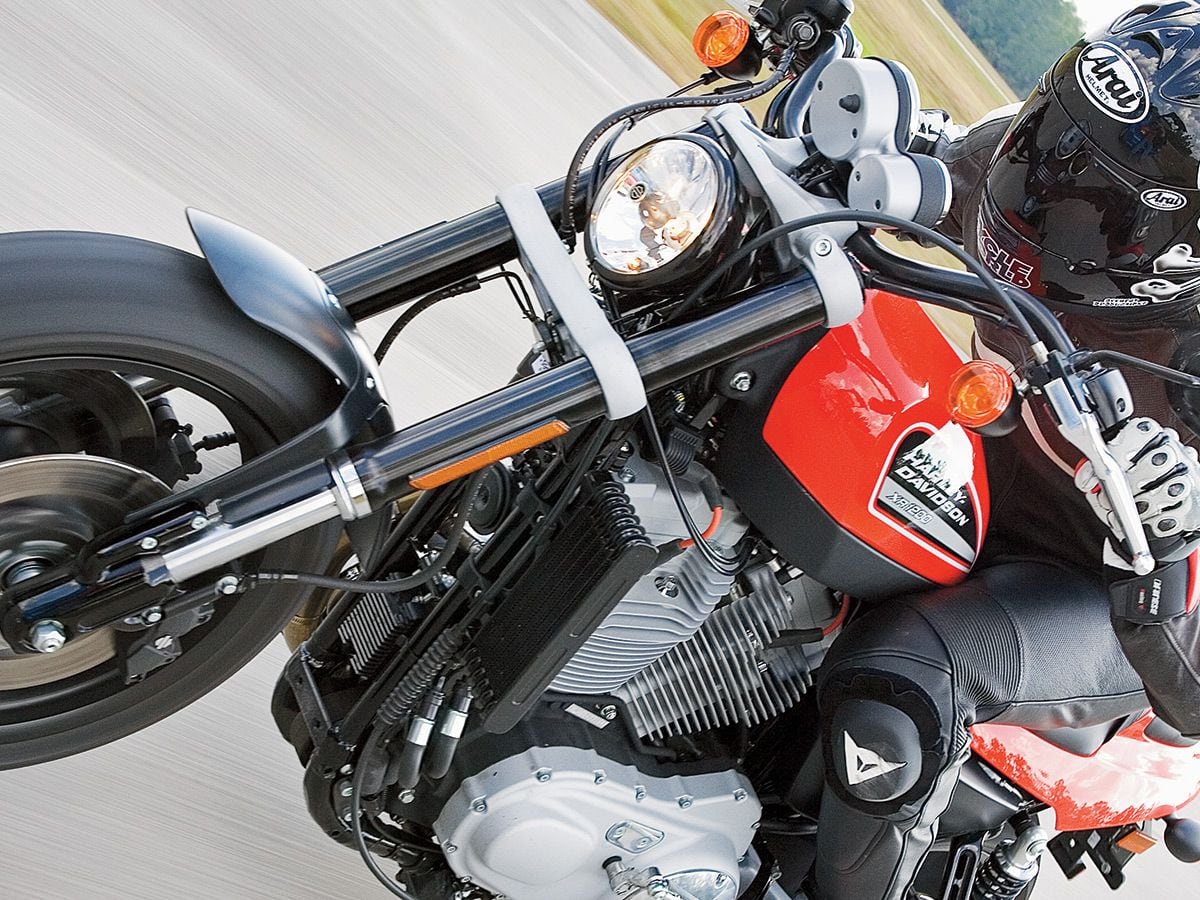
/cloudfront-us-east-1.images.arcpublishing.com/octane/TIRMQU3FXBCEJHATHD4HWAZSPM.jpg)
/cloudfront-us-east-1.images.arcpublishing.com/octane/37UNYVBYJJHUZMVUJZBQXY5ULY.jpg)
/cloudfront-us-east-1.images.arcpublishing.com/octane/KQQ2KUVMRZDQLEY7EEF2ZSHRKI.jpg)
/cloudfront-us-east-1.images.arcpublishing.com/octane/SG4HD5VO2FHCJOXKO5Z5DPPIUE.jpg)
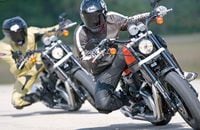
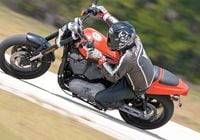
/cloudfront-us-east-1.images.arcpublishing.com/octane/PBEEGMKIXJDTFC6KYSCJOVTMOM.jpg)
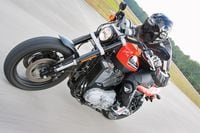
/cloudfront-us-east-1.images.arcpublishing.com/octane/KPSHPHYE7FEQ5JCH43YAPXRO5Q.jpg)
/cloudfront-us-east-1.images.arcpublishing.com/octane/B7COTHKYQNFRNHVGVADWN3YTDY.jpg)
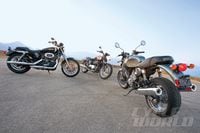
/cloudfront-us-east-1.images.arcpublishing.com/octane/RO36KTIVYZEATJW7CCB77EQHLQ.jpg)
/cloudfront-us-east-1.images.arcpublishing.com/octane/BUIUXSLF5RFRVJ3E26VRO5V2AY.jpg)
/cloudfront-us-east-1.images.arcpublishing.com/octane/EJJ2JBBSEZAWLFCRDALQOIBFVU.jpg)
/cloudfront-us-east-1.images.arcpublishing.com/octane/WVYKJFMINVFMFH37AE4OUEWVIM.jpg)
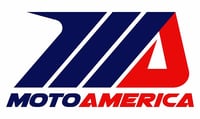
/cloudfront-us-east-1.images.arcpublishing.com/octane/JJ3MC6GNDFF5ZNYD3KD3E4EY7Y.jpg)
/cloudfront-us-east-1.images.arcpublishing.com/octane/XH2ETEU4NVGDFNQO2XT2QQS5LU.jpg)
/cloudfront-us-east-1.images.arcpublishing.com/octane/UFG652C27BDBFPK42TDAJ5CMX4.jpg)
/cloudfront-us-east-1.images.arcpublishing.com/octane/AUE3NFVRRZDSBIDVUGIYIDQNUI.jpg)
/cloudfront-us-east-1.images.arcpublishing.com/octane/LYR62CH2WNBMHJJVXVATZHOUE4.jpg)
/cloudfront-us-east-1.images.arcpublishing.com/octane/RBCTRGBQYBDK7A6XPG3HKPS7ZQ.jpg)
/cloudfront-us-east-1.images.arcpublishing.com/octane/MQXQRYMZVBCWJIRYP3HEN3SHVE.jpg)
/cloudfront-us-east-1.images.arcpublishing.com/octane/TSPODNNEWRDSVJGUCNQTDG4ADI.jpg)
/cloudfront-us-east-1.images.arcpublishing.com/octane/X5TB7BDV4BA2RPSY54ZGK27RP4.jpg)
/cloudfront-us-east-1.images.arcpublishing.com/octane/REUHOJXRDBGZ5IHBYZCCBCISPA.jpg)
/cloudfront-us-east-1.images.arcpublishing.com/octane/52LGJTCKBFEHDF7S7H4CVUIMGM.jpg)
/cloudfront-us-east-1.images.arcpublishing.com/octane/YMWAIPIPSJAOXOU3QMJMGH37OM.jpg)


/cloudfront-us-east-1.images.arcpublishing.com/octane/EJ6KZRGAYBCVXNL2PJXL37UVWQ.jpg)
/cloudfront-us-east-1.images.arcpublishing.com/octane/AAN4TI76M5H5JMUVEIGASWXBDU.jpg)
/cloudfront-us-east-1.images.arcpublishing.com/octane/P3RXD2UCPFF37CMB7CHPVKXORY.jpg)
/cloudfront-us-east-1.images.arcpublishing.com/octane/VZEG2EJI2RDFZNHLRZMU56MD3Q.jpg)
/cloudfront-us-east-1.images.arcpublishing.com/octane/GVJQO5FFOFBWNGODOBRB4FBAW4.jpg)